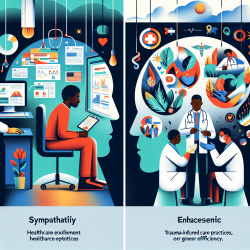Understanding the Link Between General Offending and Intimate Partner Violence
In the world of special education and therapy, understanding the behavioral patterns of young adults is crucial. Recent research titled "The Relationship Between the Development of General Offending and Intimate Partner Violence Perpetration in Young Adulthood" sheds light on a significant overlap between general criminal behavior and intimate partner violence (IPV) perpetration. This study provides insights that can help practitioners refine their approaches and interventions.
Key Findings from the Study
The study utilized longitudinal data from the Project on Human Development in Chicago Neighborhoods, focusing on young adults. It identified three distinct general offending trajectory groups: non-offenders, low-rate offenders, and high-rate offenders. The findings revealed that those involved in diverse offending patterns were at an increased risk of perpetrating both psychological and severe physical IPV.
- General offending peaks in late teenage years and early adulthood, often decreasing thereafter.
- There is a notable overlap between general crime and IPV perpetration.
- Interventions should focus on interrupting criminal careers to reduce IPV prevalence.
Implications for Practitioners
For practitioners working with young adults, these findings underscore the importance of addressing general offending behaviors as part of IPV prevention strategies. Here are some actionable steps:
- Early Intervention: Focus on young offenders to prevent the escalation into IPV. Implement programs that target the underlying antisocial behaviors.
- Holistic Approach: Consider the broader context of a young adult's life, including their social and environmental influences, to tailor interventions effectively.
- Education and Awareness: Educate young adults about healthy relationships and the consequences of IPV. Encourage open discussions to break the cycle of violence.
Encouraging Further Research
While this study provides valuable insights, it also highlights the need for further research. Practitioners are encouraged to explore the following areas:
- Investigate the role of socioeconomic factors in the relationship between general offending and IPV.
- Examine the effectiveness of different intervention strategies in reducing both general offending and IPV.
- Explore the impact of educational programs on reducing IPV perpetration among young adults.
Conclusion
Understanding the link between general offending and IPV is essential for developing effective prevention and intervention strategies. By focusing on early intervention and a holistic approach, practitioners can help reduce the prevalence and impact of IPV among young adults. For those interested in delving deeper into this topic, the original research paper offers a comprehensive analysis and can be accessed here.










